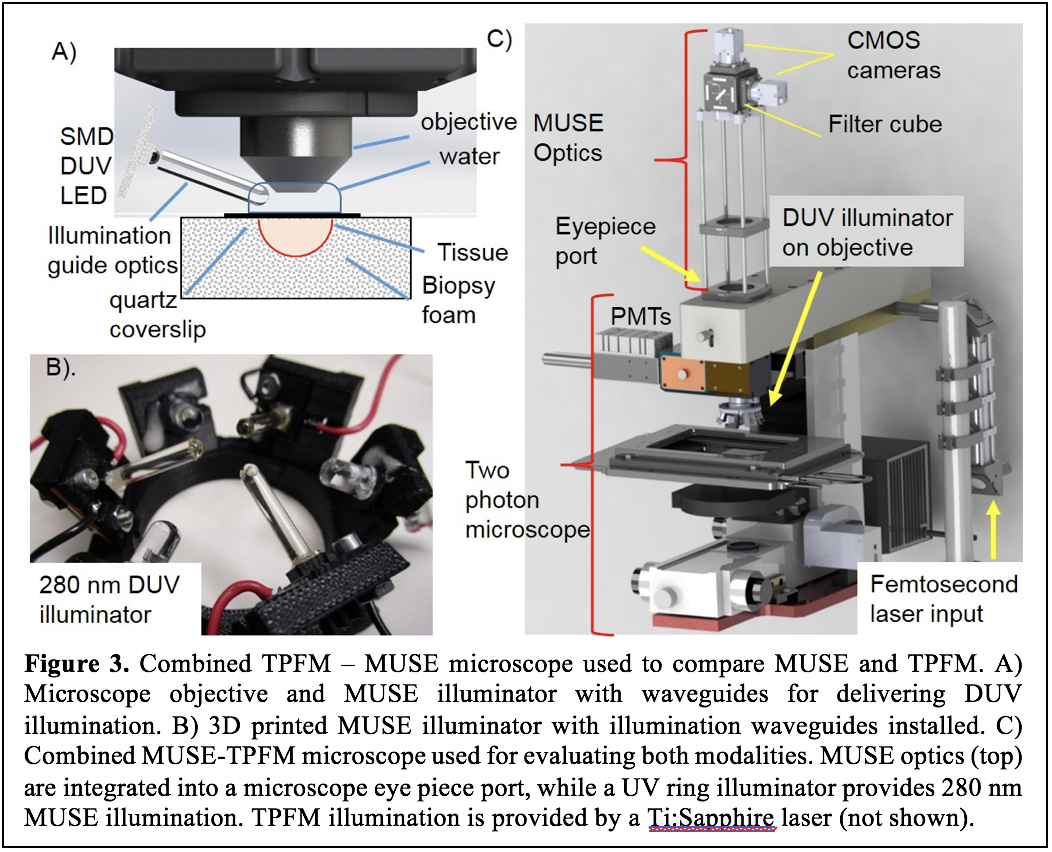Professor Giacomelli receives NIH funding

Congratulations to Professor Michael Giacomelli who has received NIH funding for his project, "Fluorescence microscopy for evaluation of Mohs surgical margins." Mohs surgery is a widely used technique for the treatment of nonmelanoma skin cancer that obtains extremely low recurrence rates by imaging tissue as it is removed from the body to ensure complete resection. However, Mohs is slow and extremely labor intensive because it depends on frozen sections processing to produce histological images. The cost and reduced throughput associated with frozen section processing limits its availability to patients while contributing to rising health care costs. My research has developed fluorescent imaging technologies, rapid tissue labeling, and image processing technologies enabling real-time evaluation of pathology in skin tissue with an order of magnitude reduction in processing time as compared to frozen sections.
This proposal will develop advanced surgical imaging technology for Mohs surgery, an application that is too cost-sensitive for existing technologies such as two photon fluorescence microscopy. The first aim will assess the accuracy of fluorescent diagnosis of Mohs surgical margins by imaging discarded Mohs specimens using microscopy with ultraviolet surface excitation (MUSE), a method demonstrated to be both inexpensive and promising for Mohs surgery. The second aim will develop two new imaging systems based on MUSE. These techniques will enable an order of magnitude reduction in cost and imaging time compared to state of the art two photon or frozen sections, enabling new applications in dermatopathology. Dramatic improvements in MUSE imaging contrast and resolution will be realized using novel illumination strategies and high speed image sensors. The final aim will perform an imaging study of the technologies developed in the previous aims in a Mohs surgical practice, demonstrating sensitivity and specificity relative to frozen sections while reducing the time to treat patients. These studies will demonstrate that new imaging technology can reduce the time associated with Mohs surgery, enabling greater access to image-guided surgery and reducing healthcare costs.
This proposal will build upon my optical and software engineering experience while providing me with important new training in dermatopathology, digital pathology, the surgical treatment of skin cancer, and the design of clinical studies. This unmentored proposal will be conducted under the guidance of Dr. Beverly Faulkner-Jones and Dr. James Connolly and who are clinician-scientists and experts in the fields of pathology. In addition, I will work closely with a new clinical collaborator, Dr. Daihung Do, a Mohs surgeon. This multi-disciplinary, collaborative environment will provide an excellent opportunity for professional growth independent of my postdoctoral advisor at MIT and training in clinical research while enabling me to establish an independent research program in surgical imaging and digital pathology.

